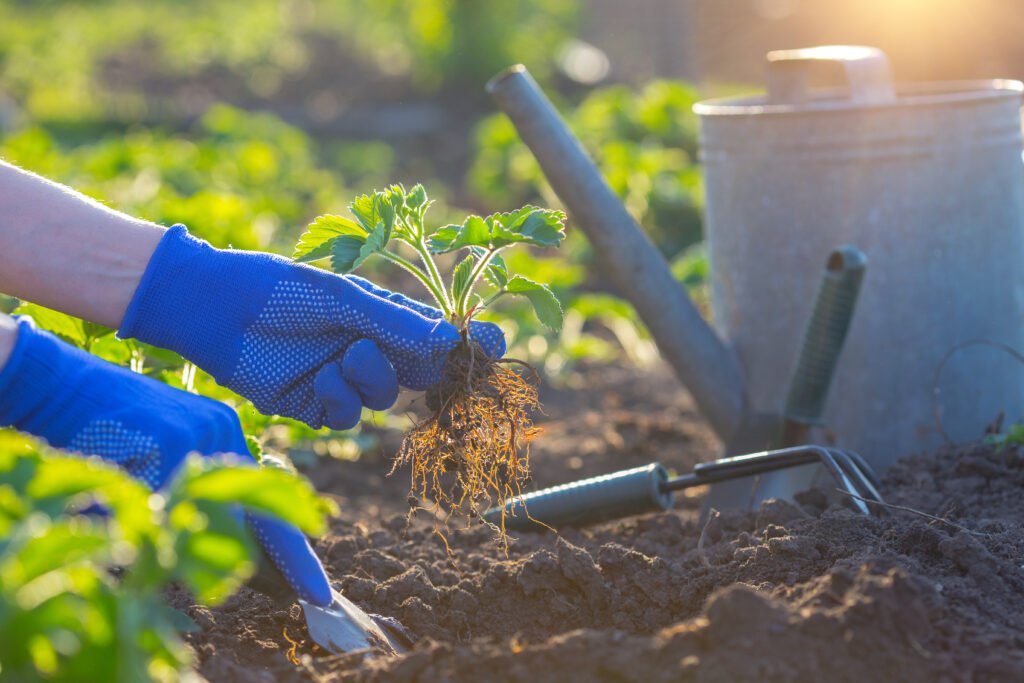1. Introduction
Potato growing fertilizer is the cornerstone of productive potato farming. The right fertilizer plan ensures not just high tuber yield, but good tuber quality (size, skin set, storage suitability), disease resistance, and sustainable soil health. In this guide, I draw from university extension data, crop trials, and my own field experience to give you everything you need — rates, timing, mistakes to avoid, and visual aids to help you implement well.
2. Understanding Nutrient Needs of Potato Plants
- Macronutrients: N, P, K
- Nitrogen → vegetative growth (leaf, stem), but too much late N can hurt quality.
- Phosphorus → early root/tuber initiation.
- Potassium → tuber bulking, skin quality, disease resistance.
- Secondary nutrients: Calcium (Ca), Magnesium (Mg), Sulfur (S)
- Calcium helps skin set, reduces internal defects.
- Magnesium often deficient in soils high in K or acid soils.
- Sulfur aids in protein synthesis, improves taste & disease resistance.
- Micronutrients: Boron, Zinc, Manganese, etc. Especially if soil test shows low.
3. Soil Preparation & Testing
- Perform soil testing 4-6 weeks before planting. Test pH (ideal ~5.5-6.5 for many varieties), organic matter content, P, K, Ca, Mg, microelements.
- Amend soil pH if needed: lime for acidic, sulfur (carefully) for alkaline soils.
- Incorporate organic matter (compost / well-rotted manure) the autumn or at least few weeks before planting. This improves soil structure, water retention, moderates nutrient release.
4. How Much Fertilizer? Rate Recommendations
Below is a table correlating yield goal, soil test levels (P & K), and recommended rates per acre (or hectare) for N, P₂O₅ and K₂O. These are approximate — adjust based on local soil test, organic matter, irrigation, clim.
| Yield Goal (Tubers) | Soil Test Level | N Rate (lb/acre) | P₂O₅ Rate (lb/acre) | K₂O Rate (lb/acre) |
|---|---|---|---|---|
| Low yield (100–150 cwt / ~11-17 t/ha) | P & K moderate to high | ~80-100 lb N | ~40-60 lb P₂O₅ | ~120-180 lb K₂O |
| Medium yield (200-300 cwt / ~22-30 t/ha) | P & K low | ~120-160 lb N | ~60-90 lb P₂O₅ | ~180-250 lb K₂O |
| High yield (400-500 cwt / ~40-55 t/ha) | P & K low to very low | ~180-220 lb N | ~90-120 lb P₂O₅ | ~250-350 lb K₂O |
- From University of Minnesota data: for irrigated soils, potatoes destined for high yield remove high amounts of N, P, K from the soil; thus fertilizer must supply accordingly.
- Also UF/IFAS recommends up to 120 lb/acre P₂O₅ in some conditions.
5. Best Timing & Methods of Application
- Pre-plant / at planting: Apply starter fertilizer; banded placement of P & K near the tuber zone (2-3 inches to side and 2-3 in below for P) to improve early uptake.
- Emergence / early vegetative growth: First nitrogen split to help foliage development.
- Tuber initiation and bulking: This is when nutrient demand (especially K) peaks; side-dress / foliar applications here are valuable.
- Late season: Minimised N to avoid excess vegetative growth that may reduce quality or create storage issues.
6. Organic vs Synthetic Fertilizers & Combining Them
- Organic options: compost, well-rotted manure, bone meal, green manure, plant liquid fertilizers (e.g. comfrey, nettle). These release nutrients slowly, improve soil biology.
- Synthetic (inorganic) fertilizers: offer precise N:P:K, faster response. Useful in split and side-dress applications.
- Integrated strategy: use organic matter pre-plant to build soil, synthetic as starter + during growth to meet peak demand. Reduces cost, improves soil sustainability.

7. Common Mistakes & Risks to Avoid
- Over‐application of nitrogen → excessive foliage, reduced tuber dry matter, risk of disease, environmental leaching.
- Ignoring soil pH or calcium deficiency → poor skin set, internal defects.
- Applying P or K uniformly without soil test – may waste fertilizer or damage soil balance.
- Placing too much fertilizer close to seed / tuber causing burn.
- Poor timing (e.g. all N early or too late) leads to inefficiencies.
8. Micronutrients & Secondary Nutrient Needs
- Calcium: Crucial for skin integrity & storage. Particularly in acidic or sandy soils. Apply via gypsum or calcium nitrate as needed.
- Magnesium: Often needed if soil high in K or if soil pH is low. Use Mg-containing fertilizers or dolomitic lime.
- Sulfur: Often neglected, especially on sandy soils. Use sulfate forms (e.g. potassium sulfate) or use multi-nutrient fertilizers.
- Micronutrients: Boron & Zinc are commonly needed; test before applying. Tissue or soil test.
9. Case Study / Example (Adapted to Local Conditions)
| Stage | Fertilizer Type & Ratio | Rate per Kanal (or hectare) | Notes |
|---|---|---|---|
| Pre-plant | Organic matter (well-rotted farmyard manure) + synthetic 10-20-20 base blend | e.g. 50 tons manure/ha + 100 kg base NPK/ha | Manure improves moisture retention; base NPK gives foundation. |
| Planting | Band P & K near seed piece | maybe 30-40% of total P & K requirement | Ensures early root access. |
| Vegetative growth (4-6 weeks) | Side-dress with N, foliar Mg / S if soil low | e.g. 40-60 kg N/ha in split dose; small Mg/S spray | Avoid too much N to prevent disease. |
| Tubering / bulking | High K fertilizer; reduce N gradually | remaining K requirement; maybe 50-70 kg K₂O/ha | Critical stage for yield & quality |
10. Monitoring, Adjustments & Harvest
- Use tissue testing / petiole sampling during mid-season to detect nutrient deficiencies.
- Observe plant growth, foliage color, flowering time; adjust side dressings if needed.
- At harvest, ensure tubers have matured (foliage dies back), skin toughens (for storage).
- Record yields, fertilizer amounts & costs for next season planning.



